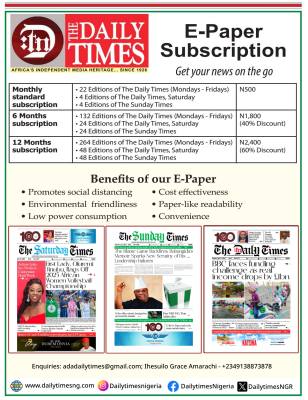Stakeholders urge govt to use unlicensed spectrum for broadband penetration

As the Federal government seeks to achieve a 30 percent broadband penetration target by 2018, stakeholders in Information and communications technology have urged the government to consider making available more unlicensed spectrum for the provision of broadband internet particularly in the rural areas in view of the protracted process of realizing National Rural Telephony Project (NRTP).
Engr. Lanre Ajayi, immediate past president, Association of Telecommunications Companies of Nigeria (ATCON) said that spectrum generally, should be unlicensed but because it is limited resources that are valuable made some of the spectrum to be licensed.
Ajayi explained that unlicensed spectrum is used for the benefit of the people and need not to be given commercial value.
He cited Wi-Fi which he described as an unlicensed frequency that smartphones and laptops use for internet connectivity at hotspots.
“Government should make available more frequencies as unlicensed for use in the rural areas in the provision of broadband internet just as United States is doing”, he stated.
His statement is coming against the backdrop of a recent report by Consumer Electronics Association (CEA) which estimates that growth of devices relying on unlicensed spectrum is extremely strong. CE devices that rely most heavily on unlicensed spectrum, which include Bluetooth and radio frequency identification-enabled devices, have a cumulative annual growth rate of roughly 30 percent from 2011-2016. Consumer demand for products like these is now, in turn, driving the need for even more unlicensed spectrum.
Mohammed Rudman, managing director, Internet Exchange Point of Nigeria agreed that though unlicensed spectrum such as Industrial Scientific Medical (ISM) bands operating on 2.4 ghz among others, are mostly used by university community and research centres among others.
“It could be deployed in small communities for internet connectivity just as it is in United States of America. Presently, such unlicensed frequency is being used in some towns in Jigawa and Kano states to provide internet connectivity within those towns,” Rudman said.
Chima Onyekwere, chairman, Linkserve a pioneer internet service provider, said that unlicensed spectrum has been proven over time to be stable in service provisioning and also suitable for providing internet connectivity in rural areas, but noted that such spectrum are not designed for profit making which means that for it to be made available for rural broadband internet government needs to subsidize it for the operators.
According to Onyekwere, unlicensed frequencies cannot propagate very far because they are higher which make them suitable for community connectivity.
The federal ministry of Communications Technology had however recently unveiled a Broadband Strategy and Roadmap which is designed to ensure coordinated roll-out of broadband infrastructure.
This results in an enabling environment for infrastructure development by private sector and ultimately increases investment in the ICT sector, and further increasing the Gross Domestic Product (GDP) contribution of the sector.
Caption








